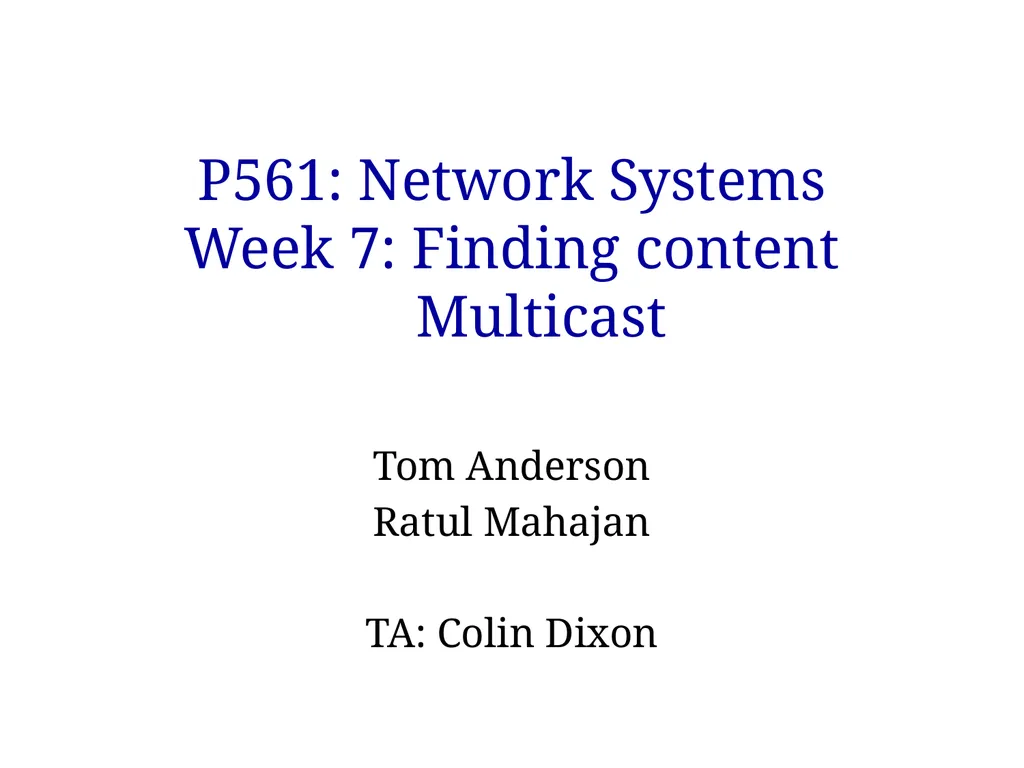
P561: Network Systems Week 7: Finding content
Author: kittie-lecroy | Published: 2025-05-28
Description: P561: Network Systems Week 7: Finding content Multicast Tom Anderson Ratul Mahajan TA: Colin Dixon Today Finding content and services Infrastructure hosted (DNS) Peer-to-peer hosted (Napster, Gnutella, DHTs) Multicast: one to many content
Download Presentation
Download the PPT/PDF: Download
Transcript:
Loading transcript…